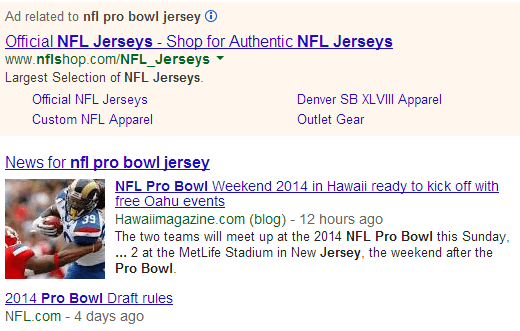First, in case you have not heard, Native Advertising is creating and placing ads to match the content surrounding it, in that the users’ experience is not disrupted by the presence of the ad. Examples of Native Advertising online include PPC Ads on SERPs (Search Engine Result Pages), Twitter’s promoted Tweets, and Facebook’s Sponsored Stories. In all three of these examples the ads look and act very similarly to the non-ad content on the page.

On One Hand, Native Ads are a Blessing
Since Native Ads do not stand out as ads from the surrounding content, it is less likely that users will ignore these ads, which is currently a problem with typical banner ads. This will in turn increase the interaction rate (i.e. Clicks and CTR) of these ads. This is a huge blessing to the online advertising, specifically display advertising, which has a very low average CTR over the years. Advertisers are hopeful that Native Ads could help revive display ads and spur on additional growth of online advertising.
On the Other Hand, Native Ads are a Curse
While resolving some problems, Native Ads are dangerously deceptive and could result is much worse problems. These ads could easily be mistaken as content rather than a paid advertisement. In the IAB Native Ad Playbook, they recommend that a disclosure is prominent so that users clearly know the difference between ads and content. In my opinion this distinction is a must. Online advertising is already fighting an uphill battle for users’ trust – Thank You Pop-ups, Pop-unders, and malware spreading via ad clicks. Now, if we as online advertisers begin to disguise our ads as content, the little trust we have regained will once again be lost.
Conclusion: Native Ads Good or Bad?
Native Ads have a huge upside and have already made a big impact to online advertising. As more websites build in spots for Native Ads, it becomes increasingly important to clarify the distinction between content and paid ads. As advertisers we decide whether native ads will be a blessing or a curse to online advertising. Personally, I think that marking Native Ads as paid advertising will not cause them to be ignored like other banner ads, and would still have the higher CTR. I think the potential of these ads is far greater than the down-side, and that the down-side can be completely avoided. We as advertisers need to use these ads wisely to reap the benefits, but not suffer the curse and loss users trust in online ads.

